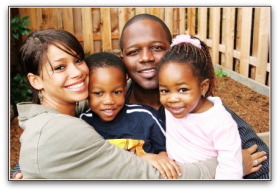
Consider the human body’s complexity and how a change in one physiological component alters and impacts so many other parts. The interrelation and interdependence of parts are integrally related so that the body’s ability to function at all depends on an intricate web of connectedness.
Now consider a family, perhaps a mother, father, and child (or children), and think of them as one human body – an organism, or a whole. One component of the family, or one individual, simply cannot be separated or understood in isolation. One individual affects all others; everyone’s deeply embedded emotional and behavioral processes seamlessly wired together.
Family systems professionals and therapists describe the family as a complex and interconnected system. Maladaptive behaviors are connected, and therefore likely to affect and create “dis-ease” in other areas – if not appropriately treated. When a change occurs in one part of the system, such as a mental health or behavioral issue, therapists must treat the entire family to help the individual regain healthy functioning.
Additionally, the entire system or family can become plagued with maladaptive interactions so that it seems to literally stop functioning.
Assumptions of Family Systems
A Juvenile Justice Bulletin published by the U.S. Department of Justice, Office of Juvenile Justice and Delinquency Prevention, summarized the main aspects of family systems therapy as follows:
- A family is a system composed of interdependent and interrelated parts.
- The behavior of one family member is only understood by examining the context (i.e., family) in which it occurs.
- Interventions must be implemented at the family level and must take into account the complex relationships within the family system.
Includes all Types of Families
During the 1950s and 1960s, family systems therapy began with a focus on the traditional family unit, but has expanded to include therapy for all types of familial relationships, including gay and lesbian couples and families, extended families related through divorce and re-marriage, and other family units that don’t necessarily include a biological mother and father.
Whatever the composition of individual members, a group that calls itself a family, and lives like a family, can be treated by family systems therapists.
How Therapy Addresses Boundaries
Much of the therapeutic work in family systems centers on boundaries, not the physical boundaries of walls and borders, but psychological boundaries. These types of boundaries can’t be seen or touched, but instead shape themselves in the form of beliefs, perceptions, convictions, and understandings. Individuals form self-concepts, for example, based on beliefs regarding who they are, and these beliefs “surround” individuals, distinguishing them from others – creating a sense of “otherness.”
These invisible and impactful boundaries are also drawn around groups and subgroups of people. For instance, parents or couples surround themselves with boundaries that separate them from other couples, their parents, and their children. Managers in a corporation have boundaries that separate them from coworkers. Hierarchies are established for a reason, for the proper functioning of the group or organization, to delegate tasks, and to ensure the proper checks and balances.
Children also form a subgroup within a family, forming a boundary around themselves separate from their parents. Ideally, the child subgroup holds less power than the parents.
Family systems therapists confront families and situations where boundaries have become crossed, distorted, or nonexistent. These types of situations lead to dysfunctional and unhealthy relational patterns.
A mother complaining to her child about her spouse – the child’s father – is one example of a crossed boundary. Another example of a crossed boundary are parents who perhaps share information about their sexual relationship with their children. These are two examples of distorted boundaries or inappropriate boundaries that lead to dysfunctional interactions.
No family is perfect, and mistakes often happen. Sometimes more is shared or not enough is shared among family members, but most families work for an appropriate balance. However, families who allow boundaries to be constantly, routinely crossed, who set up patterns of interaction and form a family process that lacks self-regulating behaviors, need help at re-forming boundaries.
Enmeshed and Disengaged Families
There are many types of boundary problems – as many problems as there are families. Family systems therapists assess families for boundary problems along a spectrum, placing boundary problems between the following two extremes:
- Enmeshed families. An enmeshed family exhibits signs of smothering, over-sharing, and caring that reaches beyond normalcy. In enmeshed families, boundaries do not allow for individuation; they are too fluid, and have become crossed and often distorted. Boundaries are constantly crossed in numerous ways.
- Disengaged or detached. Families that share little to nothing, typically overly rigid families, are described as detached. There’s little to no communication – and no flexibility in family patterns to accommodate effective support and guidance.
Who are Family Systems Therapists?
Family systems therapists work with entire families targeting misaligned boundaries and dysfunctional patterns of functioning. When an entire family receives the treatment, the psychological problems of the most troubled individual receives the most help because the system that underlies the individual’s problems is being treated.
To become a family systems therapist, a master’s degree or Ph.D. in marriage and family therapy or another counseling specialty is required. Each state has additional licensing requirements. While in a degree program, specialized classes and concentrations exist for those wanting to practice as family systems therapists. For more information on a psychology degree that could lead to a career in family systems therapy, contact the schools that offer bachelors, master’s, and Ph.D’s in psychology.